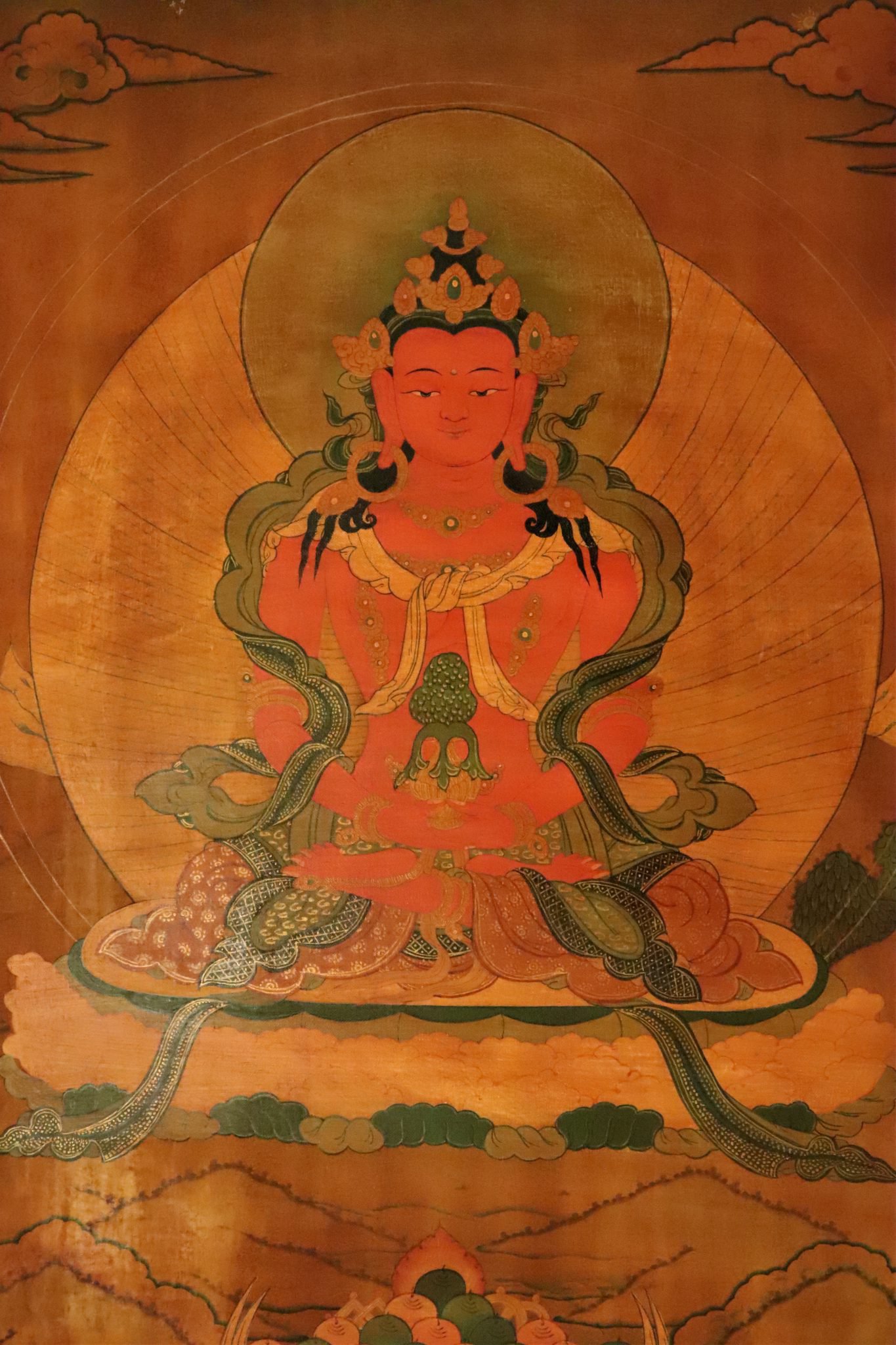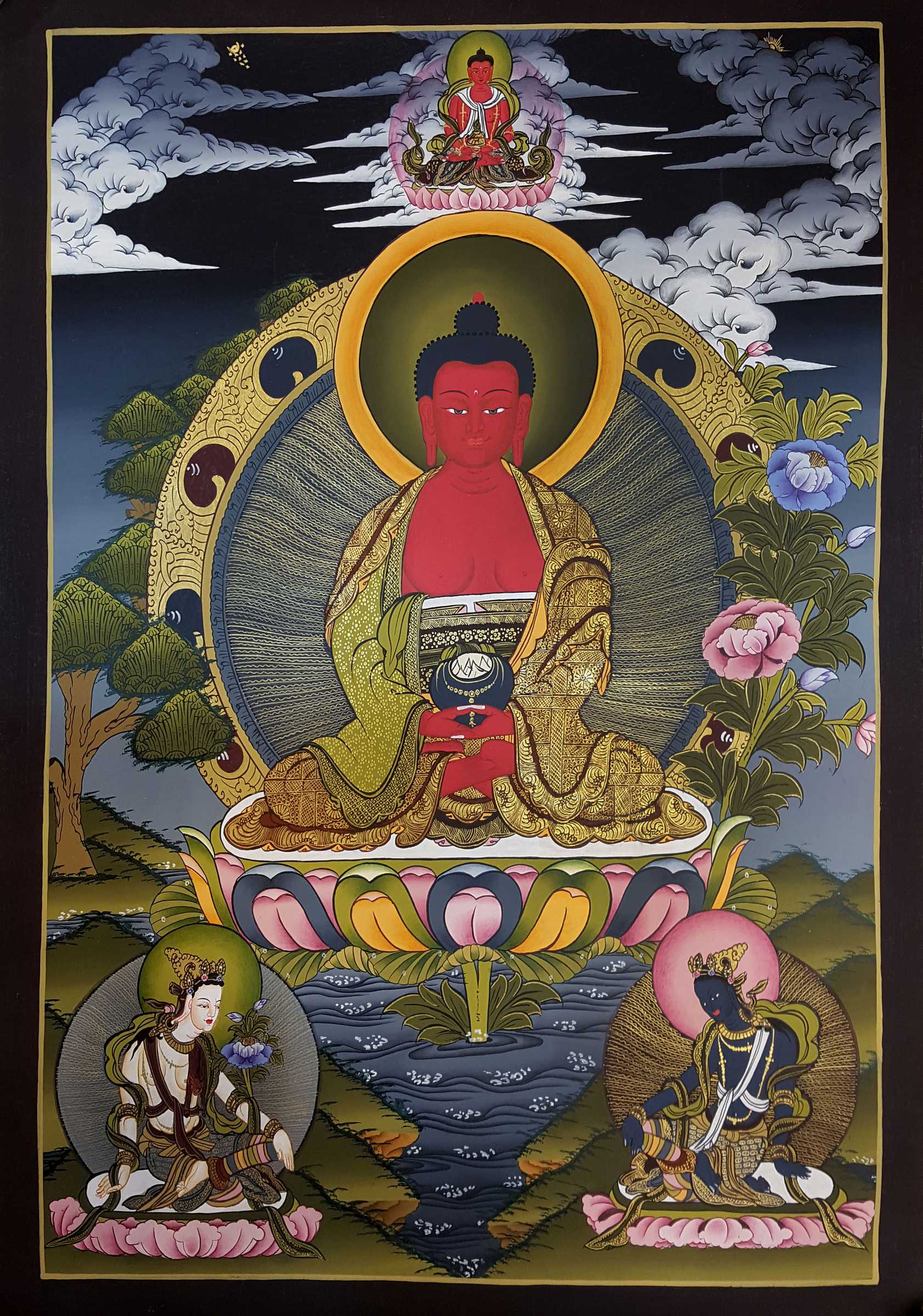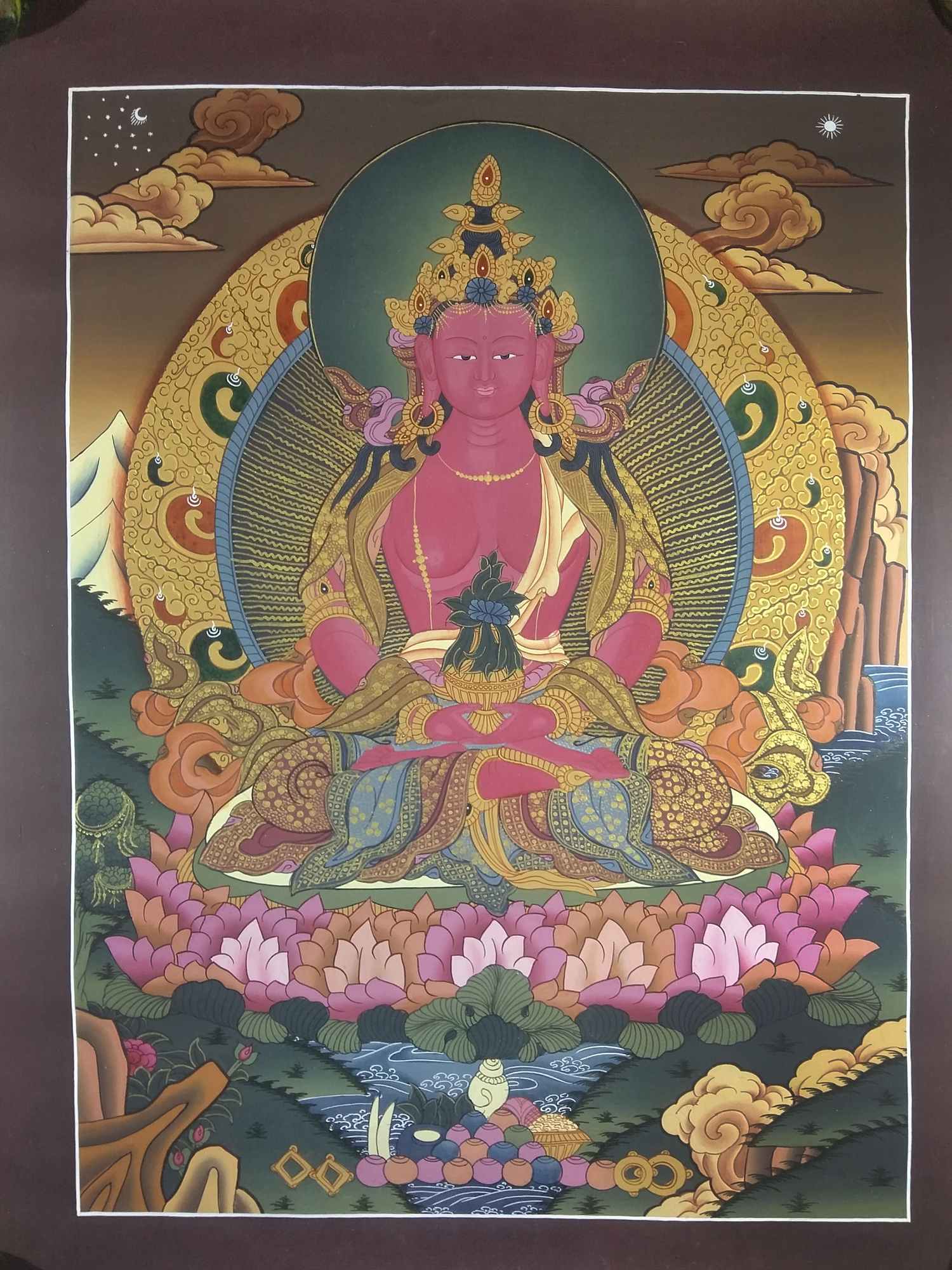

Amitabha Buddha Antique Thangka
Amitabha Buddha Antique Thangka is handpainted in Kathmandu Nepal. Amitabha Buddha is also called Amitayus Buddha.
In Japanese Amida, Chinese Emituo Fo, in Mahayana Buddhism, and particularly in the so-called Pure Land sects, the great savior Buddha.
Creator of Pure land
Amitabha Buddha created a pure land in the uttermost west beyond the bounds of our world. It is believed all who call upon him to be reborn to his land and ultimately become Bodhisattvas. The Amitabha vows to awaken us to discover who we really are and what we want deep inside.
Iconography
Amitabha Buddha is portrayed as Sakyamuni Buddha. But usually, he is often depicted seated in meditation mudra while earth touching mudra is reserved for a seated Shakyamuni Buddha alone.
When standing, Amitabha is often downward with thumb and for a seated Shakyamuni Buddha alone.
When standing, Amitabha is often shown with his left arm bare and extended downward with thumb and forefinger touching, with his right hand facing, outward also with thumb and forefinger touching.
Mudra
The meaning of this mudra is that wisdom (symbolize by the raised hand) is accessible to even the lowest beings, while the outstretched hand shows that his compassion is directed at the lowest beings, who cannot save themselves.
Tibetan Buddhism and Amitabha
In Tibetan Buddhism, Amitabha is red in color (red being the color of living, compassion, and emotional energy). His direction is west and so he is envisioned as the (red) setting sun. He is seen as the supreme power and energy of nature, cast in an earthly plain, accessible to all sentient beings.
He is being known to protect beings from the negative emotions of attachment. His unique emblem is the lotus. He is thus associated with the attributes of the lotus: gentleness, openness, and purity.











